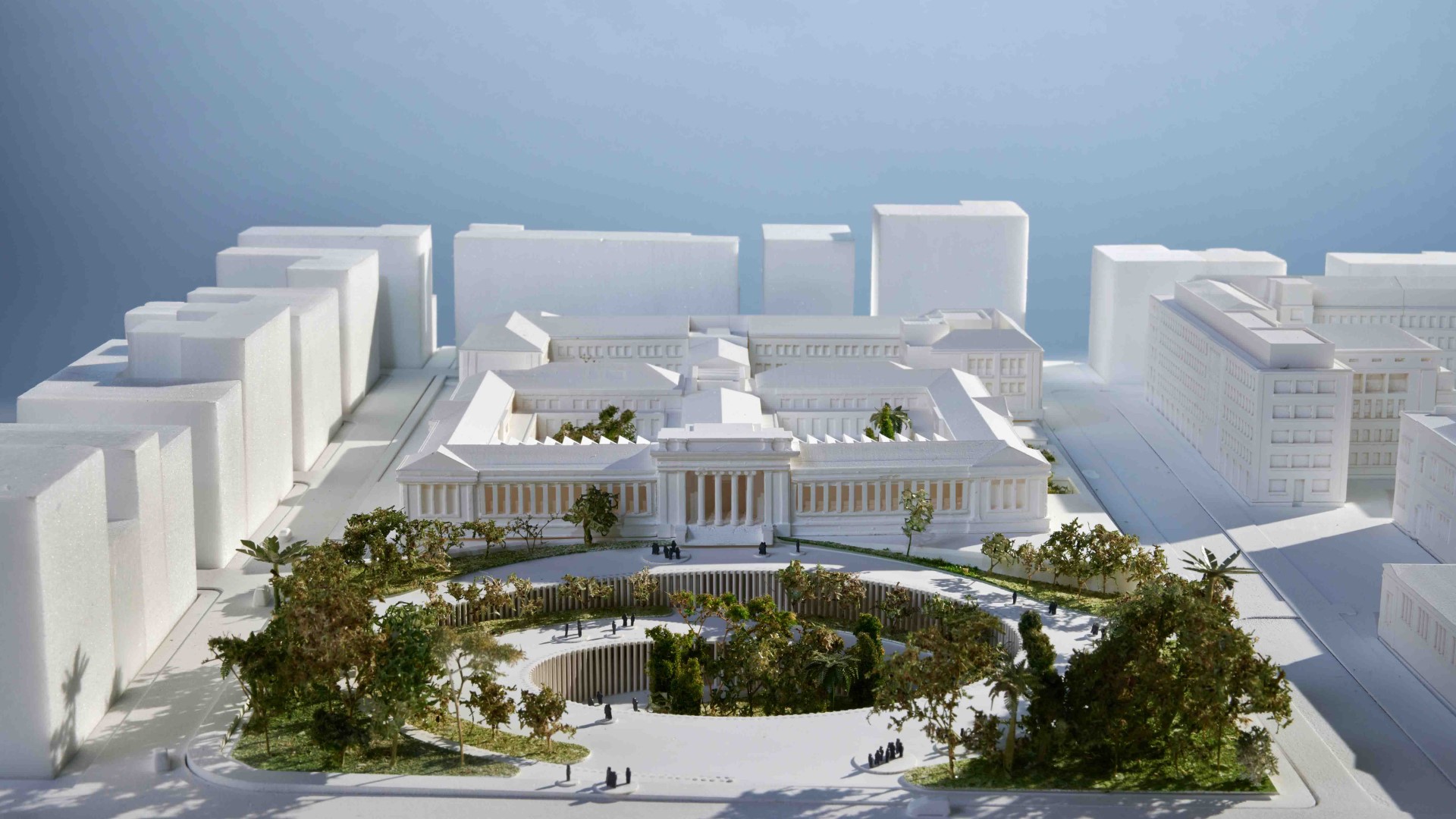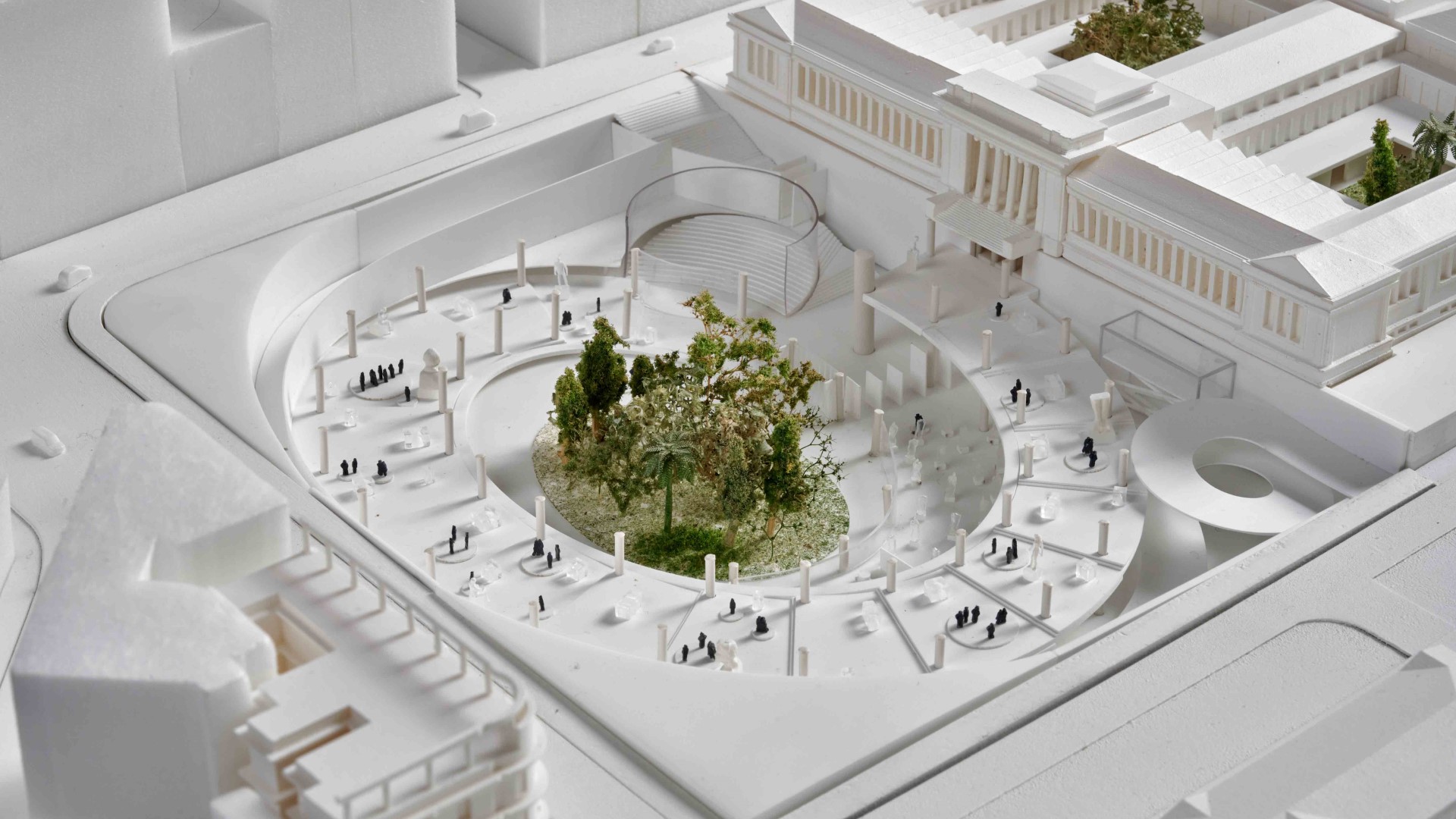ἐξέλιξις
Athens National Archaeological Museum / Athens, Greece
Invited Architectural Competition
During a late warm summer afternoon, Cecrops unrolls his body under the shade of an olive tree, praising the goddess for the gift given to the Athenians.
‘‘Tell me, Oh Muse, for what more than this sacred olive garden could I ask?’’
Cecrops,
the first king of Athens
Containing the largest collection of Greek antiquities in the world, the National Archaeological Museum (NAM) is an established landmark in the city of Athens. The collection has been consolidated into a Neoclassical building by German architects Ernst Ziller and Leopold Lange as one of the great museums of the 19th century. A Neoclassical garden at the front reinforces the Neoclassical symmetry of the building, providing a visual and physical foreground between the busy city and the museum.
Our proposal for the museum’s extension plays with the concept of ἐξέλιξις (exélixis) – the Ancient Greek word describing the idea of evolution – in both its physical manifestation and its allegorical relationship to the existing monument. ἐξέλιξις stands for the museum’s dialogue with contemporary Athens, unfolding history and antiquity into a continuous gallery to create a new symbol for the 21st century.
The Helix
The new galleries are carved into the earth, spiraling around a sunken garden with an ancient olive tree at the center. Loosely following the path of the existing alleys, the building allows for most of the trees to be preserved. Classical in shape, contemporary in implementation, the Helix calls and responds to the Neoclassical monument, visually reinforcing its symmetry, while simultaneously upending its formal axial approach. The Helix creates a new entrance for NAM. The act of arrival to the museum now becomes an experience, with the movement of queuing visitors facilitated by the gentle ramp. The Helix includes a new entrance foyer, an auditorium, the garden café, space for temporary exhibitions, and 4,600 square meters of gallery space for the expansion of the permanent collection.
The Spine
Accessed from the Helix, the Spine slices through the Neoclassical building at its lower level. Acting as a linear path, the Spine consolidates the main circulation of the museum into one central space along the symmetrical axis, decongesting the gallery spaces and giving legibility and orientation to visitors. Utilizing the ‘concealed spaces’ beneath the museum, the Spine completes the lower level of the Neoclassical building, splicing together the four museum entities: the Helix (new galleries), the Neoclassical building, the East Wing and the Epigraphic Museum.
Lead Architects: ΟΜΑ
Partner: Reinier de Graaf
Associate: Michalis Hadjistyllis
Team: Lorenzo Bavelloni, Catalina Dumitru, Carol Patterson, Andrea Verni, Maxwell Wootton, Suet Ying Yuen
Model: Matteo Fontana, Marc Heumer, Tijmen Klone, Alisa Kutsenko
Collaborators:
Greek partner: RS SPARCH (Rena Sakellaridou, Niovi Tsompikou)
Engineering: ARUP
Lanscape: Ecoscapes
SPARCH RENA SAKELLARIDOU SPARCH PC / All rights reserved / 2024




